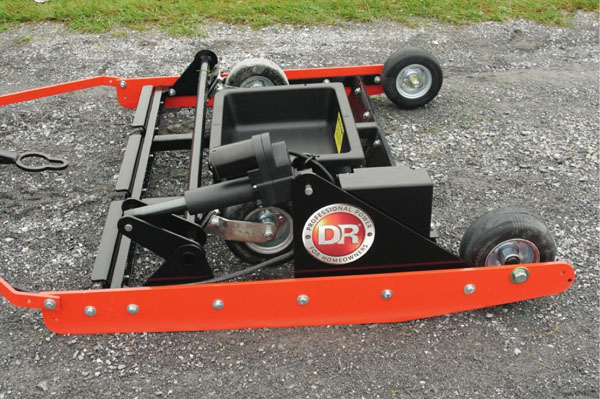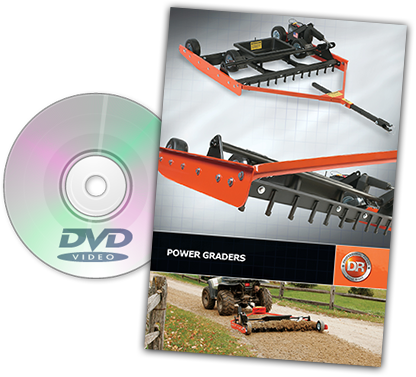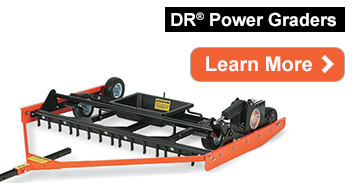How to Grade a Gravel Driveway
 If you have a gravel driveway or road on your property, then you know the common problems with them:
If you have a gravel driveway or road on your property, then you know the common problems with them:
- ruts develop that are uncomfortable and dangerous to drive over
- washouts appear after heavy rain
- the gravel becomes compacted and has to be replenished every few years.
Grading your driveway regularly is the best way to fix these problems once they happen, and even prevent them in the future. If you just have a few potholes, you could fill them by hand, but remember that this is a quick fix, and they will reappear pretty quickly. A more long-term solution is to invest in a means of grading your driveway mechanically. This not only fills in potholes, but loosens gravel that has been compacted, saving you the expense of buying more gravel. Here are some tips for grading your gravel driveway.
 The Tool
The Tool
Driveway graders are tow-behind machines that attach to your truck, ATV, or lawn tractor. Alternatively called box graders, driveway groomers, or box blades, they all rely on a straight leveling blade and sometimes some teeth to dig into the gravel and decompact it. The DR Power Grader takes this premise a step further than other graders, with teeth that can be adjusted to dig deeper or more shallowly depending on your conditions. Best of all, you can change their depth with a remote control right from your towing vehicle. If you’re shopping for a driveway grader, remember to consider:
- Width (the wider the grader, the less time you spend grading)
- How deeply it can grade (you want to grade at least as deep as your deepest potholes)
- What towing vehicles it is compatible with
The Technique
Once you’ve chosen the grader that best fits your needs, here are some tips for how to grade a gravel driveway:
- Start by digging as deeply as you can to loosen all the gravel. If you have a DR, this means simply adjusting the actuator to dig as deep as your deepest potholes or washboarding. You may need to add cinderblocks, heavy rocks, or other weight to your grader to make it dig deeper.
- Drive back and forth over the driveway, starting on one side and working toward the other with each pass. It will probably take two or three passes over each section to completely decompact all the gravel.
- Once it is all decompacted, check for washouts or areas where gravel has migrated from the driveway onto the grass. Sweep this gravel back onto the driveway with either a broom or walk-behind mechanical sweeper.
- Finally, take another couple passes to level out the gravel. If you have the DR, do this final step with your actuator at a higher setting. The leveling blade on the DR Power Grader is made of heavy steel and stays at a uniform height during the grading process, distributing loosened material evenly over your whole driveway.
Maintenance
Most people grade their driveways and country roads in the spring and again in the fall. In the spring, you have to clean up from the damage that Old Man Winter has done. In the fall, you grade to minimize that damage for the next year. In between gradings, though, there are things you can do to keep your driveway looking its best:
- If potholes do appear, you can fill them with loose gravel or use a heavy-duty rake to loosen the compacted gravel around them and fill them with that. This is not a permanent fix, but if a really nasty pothole appears, it’s an easy way to get rid of it.
- Sweep or rake gravel that wanders off the driveway back into place.
- Make sure your driveway’s crown is maintained. The crown – the high point at the center of the driveway – helps your driveway to drain. Poor drainage is what causes ruts, potholes, and a whole lot of frustration!
Want to learn more about DR Power Graders?
Order your FREE Buyer's Guide & DVD!

What's inside
- 24-Page Buyer's Guide
- Action-Packed DVD
- Money-Saving Promotions
